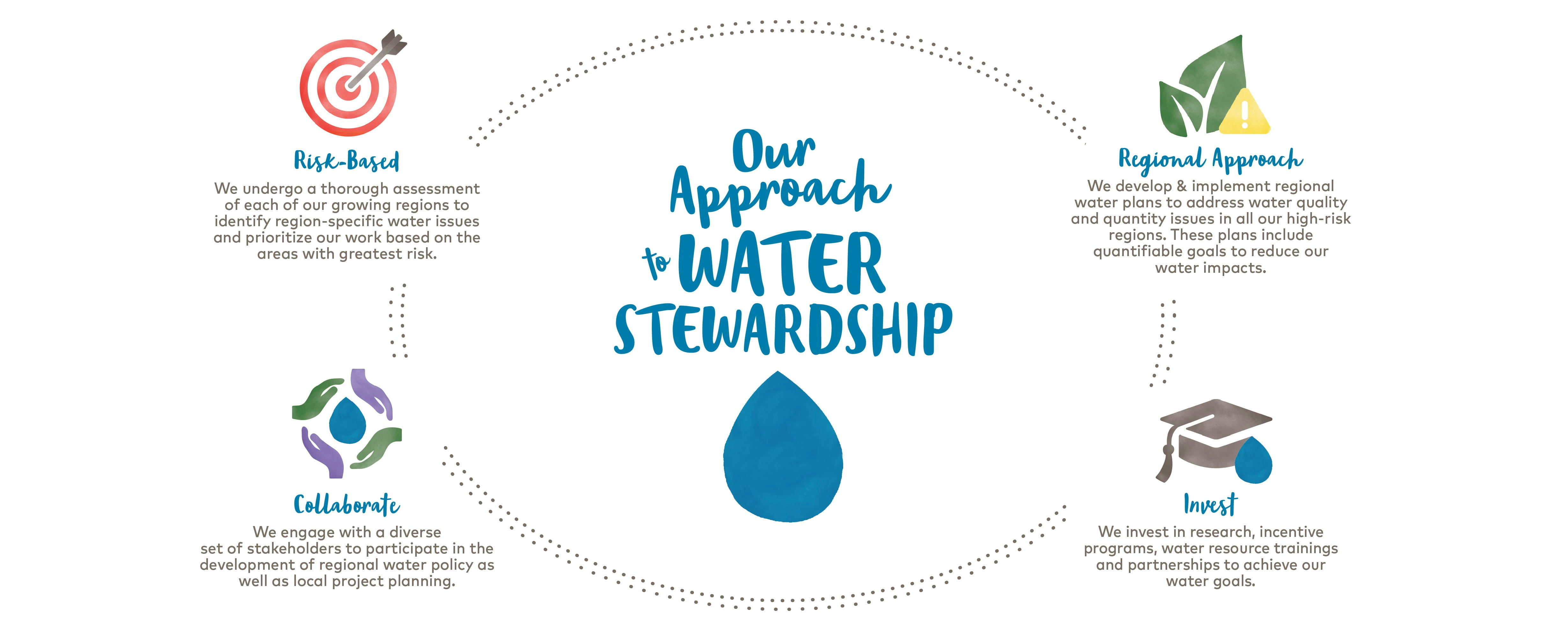Water is a precious and shared resource on which all communities, ecosystems, and sectors of the economy depend, including our business. We have had a long-standing commitment to sustainable water management, from supporting local community water dialogues to our more recent engagement in multi-stakeholder collaborations like the Ag Water Challenge.
We believe companies can, and should, engage on water challenges. As a global leader of fresh berries, we are committed to the sustainable management and equitable utilization of water. We envision a future where agricultural water is managed effectively in our growing regions to support the long-term viability of agriculture while ensuring local communities and the environment can thrive. To achieve this, we work alongside growers, community stakeholders, water authorities, and nongovernmental organizations to advocate for and support responsible water management practices and laws.
Our Approach
As a company, we have released a formal Water Stewardship Statement that has been shared with our network of independent growers throughout North America. We have set business-wide objectives to focus on both water quality and water quantity in our highest-risk growing regions. These business-wide objectives create prioritization and accountability while allowing for the development of local plans to reflect the unique challenges in our growing regions, which is why Driscoll’s takes an approach that is:
Our Impact
We’re proud of the impact we’ve made to date through our work with independent growers, community leaders and water management agencies to drive collective water action. Our water stewardship journey continues to evolve through technology, new collaborations, advocacy efforts and more. Below are just a few examples of the work we are doing in growing regions across North America:
Efficiency & Innovation
Driscoll’s works with growers to reduce water usage. As just one example, in our Oxnard region, nearly two-thirds of our growers adopted micro-sprinklers, which save up to 40% of water used during plant establishment when compared to traditional methods.
As one example of water innovation, Driscoll’s is collaborating with the University of California, Santa Cruz and independent growers to pilot the collection of stormwater on farms to replenish aquifers in the Pajaro Valley in California. To learn more about this project, click here.
Our environmental and agronomy teams frequently hold water trainings and conduct one-on-one support with our network of independent growers to showcase new technology, share learnings across regions, and increase adoption of water-related best management practices.
To learn more about our water stewardship initiatives from our environmental team and the Environmental Defense Fund, click here.
Advocacy
Driscoll’s was one of the earliest agricultural industry supporters of California’s Sustainable Groundwater Management Act, which, for the first time in state history, creates a framework to reach groundwater sustainability within high and medium priority areas by 2042.
We also supported the development of statewide policy and funding to assure safe and affordable water for California communities affected by infrastructure gaps, drought or water contamination.
In 2009, before SGMA was signed into law, we established a community-led forum to better manage water usage in the community called the Pajaro Valley Community Dialogue.
External Collaboration
Driscoll’s works with a variety of NGOs and university partners to further our reach and expand the information and resources available to the community to better manage this valuable resource. For example, in 2015, Driscoll’s joined other industry leaders in the nonprofit Ceres’s Connect the Drops campaign. This encouraged businesses to make a commitment to conserving water and add their voices to influence water management policies at a state level. This campaign was instrumental in getting two efficiency measures passed, which will help make water conversation a way of life for Californians.
We also collaborate closely with local researchers and conservation groups to develop new and improved water best-management practices. In California, this includes working with local Resource Conservation Districts on water management tools for specialty crops, improving research on input efficiencies with University of California Cooperative Extension, among others.
